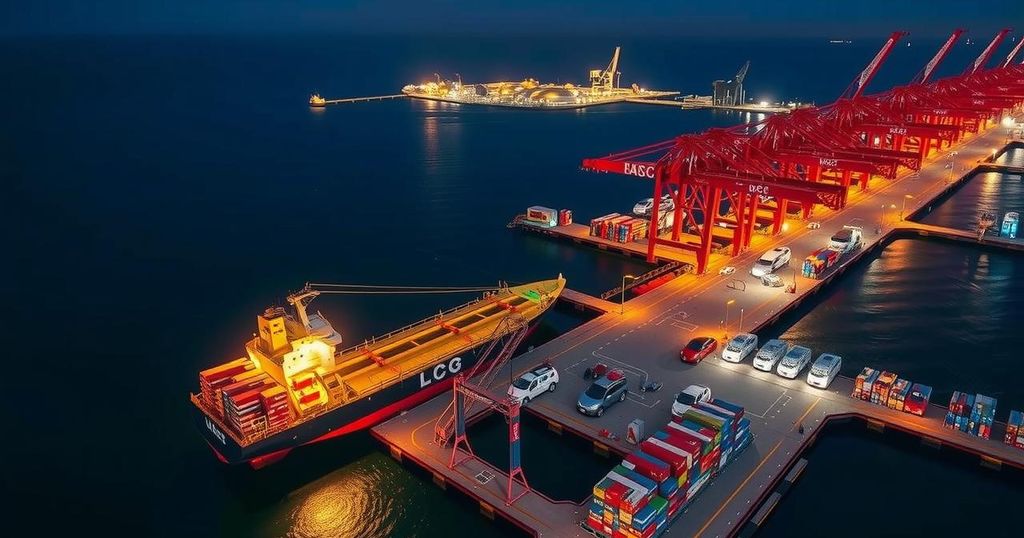A significant seizure of 43 tons of sodium carbonate at Chile’s Arica Port highlights its role as a trafficking hub for Bolivian cocaine operations. This chemical was shipped from Hong Kong and falsely labeled to evade detection, with the port’s historical customs agreements contributing to its relevance in drug trafficking activities. Recent trends reveal increasing dependence on Arica for the importation of cocaine precursors and exportation of the drug itself.
The recent seizure of 43 metric tons of sodium carbonate at Arica Port in Chile has accentuated the significant role that this port plays in the Bolivian cocaine supply chain. Announced on November 5, Chilean authorities revealed that this precursor chemical was shipped from Hong Kong, falsely declared as “tile adhesive” to elude inspections and was intended for Bolivia. This represents a monumental crackdown, described as one of the largest seizures in the nation’s history, highlighting the economic implications of the drugs that could have been produced from this quantity. Sodium carbonate, commonly used in industries such as glass manufacturing and as a cleaning agent, is utilized in the cocaine production process to extract the cocaine alkaloid from coca leaves. The strategic positioning of Arica, in proximity to Bolivia, along with a unique customs agreement from a 1904 treaty, enables Bolivian cargo to flow through with limited oversight, facilitating both the import of precursor chemicals and the exportation of cocaine. In recent years, Arica Port has witnessed numerous significant drug-related seizures, illustrating its critical operation within drug trafficking dynamics. Despite geographical advantages that neighboring Peru holds as a major cocaine producer, 75% of the port’s cargo either originates from or is destined for Bolivia, underscoring its established connection to Bolivian drug networks. The port’s allure extends beyond logistics; Chile’s reputation for lower corruption compared to other regional countries makes Arica enticing for drug traffickers, who believe that their operations may garner less scrutiny. Furthermore, recent tariff reductions on Bolivian cargo may predict an upsurge in cocaine trafficking through this maritime terminal, raising concerns for authorities tasked with combating drug trade.
The increasing role of Chile’s Arica Port in the Bolivian cocaine supply chain has become evident, particularly through significant seizures of precursor chemicals intended for drug production. The precarious nature of drug trafficking in the region is intensified by historical treaties that have shaped customs operations, significantly impacting the dynamic between Chile and Bolivia. Recent enhancements in drug trafficking activities through this route are troubling for regional authorities.
In conclusion, the substantial seizure of sodium carbonate at Arica Port is a clear indicator of the evolving dynamics of drug trafficking in South America, particularly the relationship between Bolivia and Chile. The strategic advantages offered by Arica, characterized by both geographical proximity and favorable customs policies, present critical challenges for authorities aiming to mitigate cocaine trafficking. The potential increase in drug flow due to relaxed tariffs and heightened Bolivian cocaine production adds urgency to the situation.
Original Source: insightcrime.org






